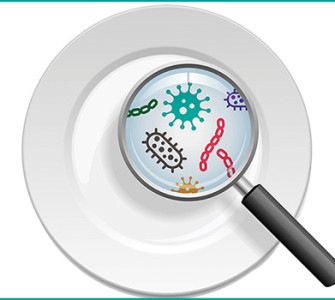Interpreting the language of the new VFD rule
In a candid 90-minute interview with editors from Poultry Health Today and the VFD News Center, William Flynn, DVM, MS, deputy director for science and policy for FDA’s Center for Veterinary Medicine, clarified some hazy points of the new veterinary feed directive (VFD) regulations. Here he fields questions about syncing the labels of mature VFD medications to today’s health problems.
Q: Many of today’s feed medications were registered more than 40 or 50 years ago. They’ve been used responsibly and, as a result, they’re still highly effective against a broad range of respiratory or enteric diseases. Yet, when these products were registered, management practices, facilities and disease pressures were considerably different than they are today. If veterinarians are confident that a particular broad-spectrum antibiotic is going to be effective against the problem at hand but there’s not an exact match on the VFD product label, what options do they have?
WF: Under the VFD regulations, veterinarians are limited to using that product according to the label — the specific indications of use and conditions of use that are outlined on that product label. In some cases, the labels are very, very specific regarding the indications for use and that limits the flexibility they have, but in other cases, the labels are a little bit broader.
Q: OK, but let’s say we have a house of chickens with an obvious respiratory or enteric problem and the veterinarian needs to do something quickly to manage the outbreak and relieve suffering. The vet is not exactly sure what pathogens are in play. But if he or she thinks that, say, chlortetracycline or tylosin might be effective, could he or she look at the label and say, “Well, there’s a good chance that one of those bugs on the label is in there, so I’ll check this box and go on my gut feeling.” Is that a reasonable course of action given the circumstances?
WF: Yes, if they have a respiratory disease, for instance, and are reaching for a VFD drug that is approved in feed for treating respiratory disease in that animal, that would be acceptable. In these cases, we need to look to the veterinarians to use their clinical judgment. This goes back to that general or preliminary diagnosis in the VCPR (veterinarian-client-patient relationship).
For VFD or prescription products, our main concern is that there’s veterinary oversight. That’s our primary objective — that the veterinarian is involved and is consulting with the producer and helping make decisions around the use of that product and selecting the product for the given circumstance, based on their judgment of that circumstance.
But again, there are some limitations. Because of the way the law is written, animal drugs administered in feed must be used according to the label indications.
Q: So, in summary, if a veterinarian is making a clinical diagnosis and wants to use a broad-spectrum antibiotic for a condition or pathogen that is, in their best judgement, potentially related to an indication on the product’s label, could they feel comfortable writing a VFD for that feed medication?
WF: There is a legal obligation to use the product on label. I’ll use respiratory disease in cattle as an example. You may have Product A that’s approved for respiratory disease and Product B that’s approved for foot rot but not for respiratory disease. If they’re making a diagnosis of respiratory disease, then obviously, they need to be reaching for and authorizing the use of a product that has a respiratory disease on the label. They can’t authorize a product that only has a foot rot claim for treatment of respiratory disease. But in terms of diagnosing respiratory disease, we’re not interested in second-guessing the veterinarian. The veterinarian needs to use clinical judgment to determine whether they are in fact dealing with respiratory disease.
Q: So, just to be clear for our readers, if there’s a respiratory disease and there’s a specific antibiotic the veterinarian feels will be effective and it at least has one respiratory claim, the veterinarian in his or her clinical judgment and experience could feel confident issuing a VFD for that product. Is that correct?
WF: Yes, that’s accurate. Labels on these products are sometimes more specific and sometimes not. Some may specify respiratory disease associated with bacteria X, Y or Z. The veterinarian may not have confirmed diagnostics that prove it’s bacteria X, Y or Z, but if the clinical syndrome is one they feel, based on experience, is consistent with that respiratory disease and the history suggests it’s often associated with one of those bacteria, then, yes — I think that would be acceptable. It’s not as though we’re saying a veterinarian is obligated to get more diagnostics if their clinical judgment leads them to believe this is the appropriate product to use.
Posted on January 25, 2017

















